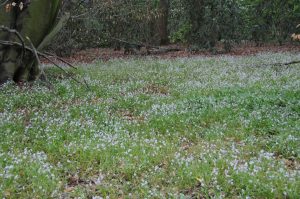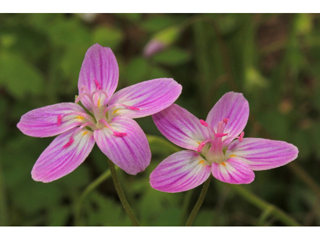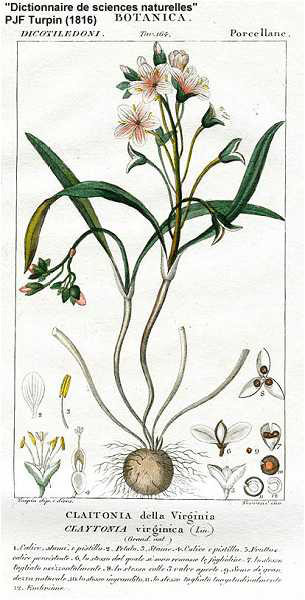By Jack MacRae
Ephemeral Flora
Spring beauties (claytonia) are true cuties. They’re wee little flowers found in our mature oak and maple woods. Look close and you’ll see five peppermint pink striped petals that form a saucer shape corolla, two soft green sepals that form the calyx, and five stamens with pretty in pink anthers. They are worthy of their name.
Pollen Nation

A large number of insects – estimated over 100 species of bees and flies – have spring relations with spring beauties. Those pink stripes on the petals contain ultra violet markers, unseen by the puny human eye, which directs insects inside the flower’s nectar chamber for pollination.
Big Words
Spring beauty’s association with ants is a text book example of myrmecochory (serious, it’s in my text book). Ants are attracted to the seeds and carry them off to their nest, where they remove and consume the tasty (really?) elaiosome. The remainder of the seed is discarded to hopefully germinate; a case of mutualism, at its finest.
Most of the spring beauty is safe to eat. The leaves are high in Vitamin C and the plant was used by early people to fight scurvy. It earned the name “miner’s lettuce” during the gold rush days. The corm tastes like a mild radish and raw potato.
 Spring beauties bloom early in the season, opening only on sunny days in April and May. Once the canopy leaves open above them and shade the ground, their blooming is done for the season. The grass-like leaves will upright remain to process the sunlight into energy to be used in next year’s flowering. And then, by mid-summer, they’re sleeping beauties.
Spring beauties bloom early in the season, opening only on sunny days in April and May. Once the canopy leaves open above them and shade the ground, their blooming is done for the season. The grass-like leaves will upright remain to process the sunlight into energy to be used in next year’s flowering. And then, by mid-summer, they’re sleeping beauties.



